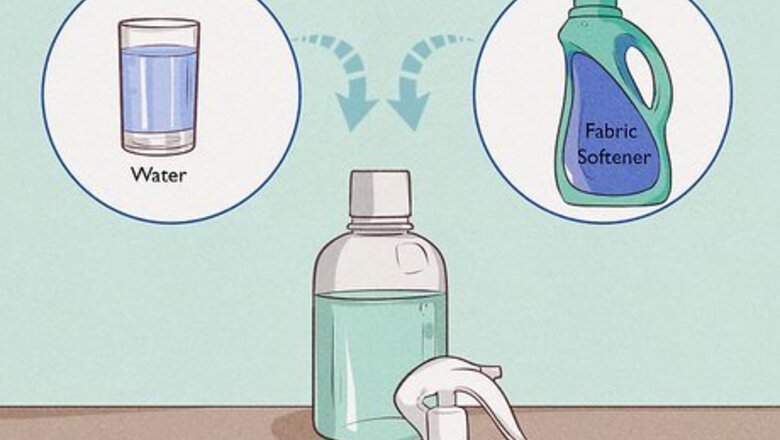
views
Making the Wig Soft with Fabric Softener
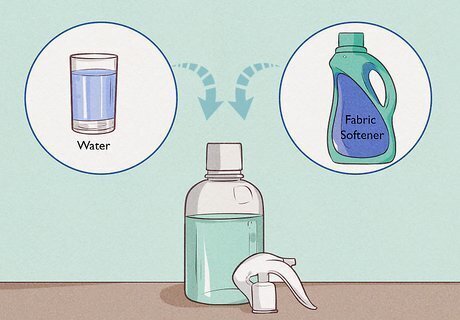
Mix equal amounts of water and fabric softener in a spray bottle. Add 1 part cold water and 1 part fabric softener into a spray bottle. Then, screw on the lid tightly and shake the bottle for a few seconds to combine the liquids. For example, combine 1 cup (240 mL) of water and 1 cup (240 mL) of fabric softener into the bottle. Don’t use hot water, as this can damage the fibres of your wig.
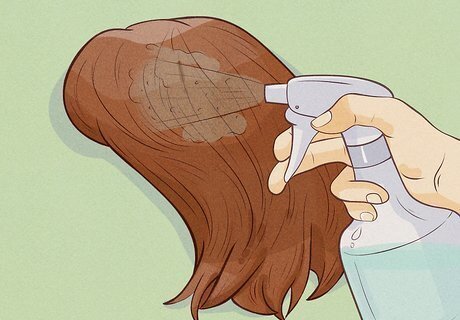
Spray your wig liberally with the fabric softener spray. The fabric softener spray helps to moisturise the synthetic fibres and makes them soft and shiny. Spray the top layer of the wig until the hair is soaked and dripping. Then, lift up the top layer of hair and spray the strands underneath. Spray the wig over a sink to avoid making the floor slippery.
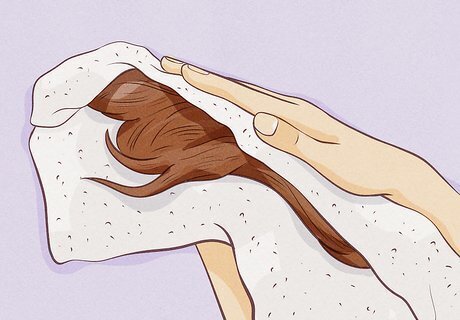
Dab off any excess spray with a towel. Avoid rubbing your synthetic wig with a towel, as this can damage the fibres. Instead, lightly dab the hair with a towel to absorb any drips of water. Don’t worry if the wig is still damp, as it will dry overnight. Avoid blow-drying your wig, as this can weaken the strands.

Leave the wig to dry on a coat stand overnight. Place the wig on the coat stand and smooth down the hairs into your desired style. Leave the wig to dry for 6 - 10 hours or until it is completely dry before you put it on. If you don’t have a coat stand, place the wig on a hook instead.
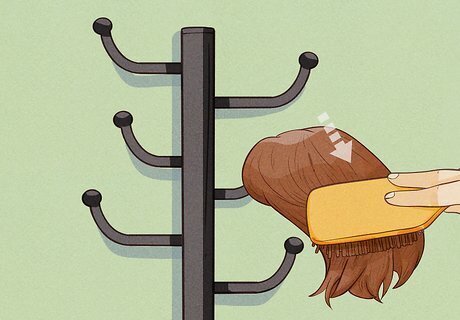
Brush your synthetic wig with a paddle brush. This helps to remove any knots and makes the hair look smooth. Start at the roots and work you way down to the ends of the hair. Avoid tugging too hard on the hair, as this can pull it out of the wig. Instead, use a fine comb to slowly break down any knots. Avoid brushing the hair when it is wet, as this can pull the strands out of the base of the wig.
Cleaning and Smoothing Your Wig

Fill a sink with warm water and 1 US tbsp (15 mL) of dishwashing liquid. Ensure that your sink is clean and then add the water and dishwashing liquid. Use your hand to gently mix the water and dishwashing liquid together to form small bubbles. If you don’t have a clean sink, use a bucket instead. Avoid using hot water, as this can damage the wig. Instead, use warm water that you can comfortably immerse your hand in.
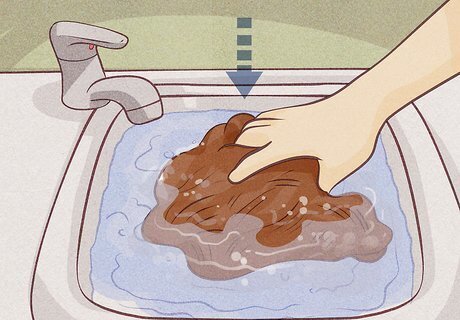
Saturate the wig in the water and dishwashing liquid. Dunk the wig into the sink and immerse it in the water. Make sure you push down on all the strands to ensure that they absorb the water.
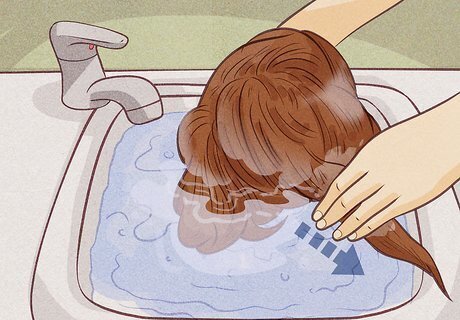
Use your fingers to wipe off any marks or make up from the wig. Search the wig for any marks and signs of grease. If you notice any dirt, use your fingers to gently push the dirt out of the hair. Try to use downward motions, as this helps to smooth the hair. Avoid rubbing the hair, as this can make it frizzy.
Dunk the wig into cold water. Empty the warm water and dishwashing liquid from the sink and refill it with cold water. Immerse the wig in the cold water to rinse off any dishwashing liquid residue. Then, gently lift the wig out of the sink. If the wig still looks soapy, empty the sink and immerse it in fresh water again.
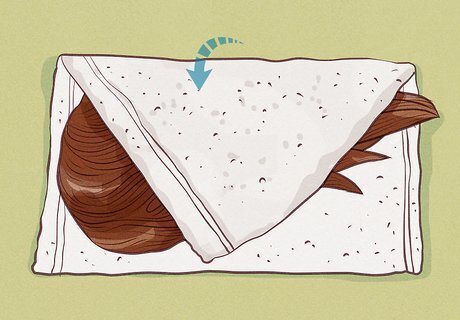
Squeeze out any excess water and leave it to dry on a towel. Squeeze the hair at the top of the wig first and then work your way down to the ends. Once you have squeezed out the bulk of the water, rest the wig on a towel to dry. It normally takes about 6 - 12 hours for wigs to dry. Check that the wig is completely dry before you wear it or brush it.
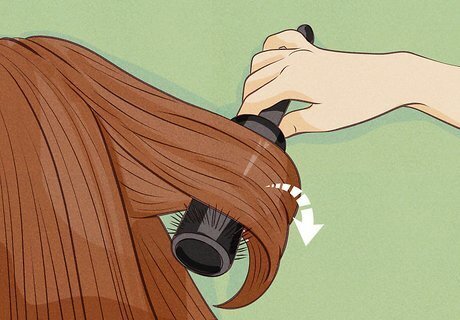
Brush the hair with a round brush. Place the wig on a coat stand or hold it 1 hand. Then, gently brush the hair downward with a round brush. This helps to remove the knots in the hair and makes it feel soft. If you don’t have a round brush, use a regular brush instead.


















Comments
0 comment